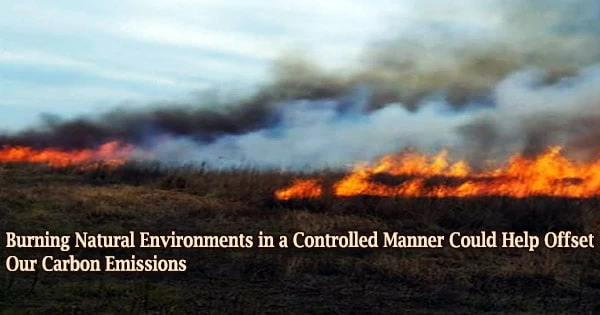Planting trees and preventing wildfires do not always result in natural ecosystems storing more carbon. Prescribed fire can actually lock in or increase carbon in the soils of temperate forests, savannahs, and grasslands, according to a recent study.
The discovery suggests a new approach for controlling the world’s natural potential for carbon capture and storage, which could also aid in the preservation of natural ecosystem processes. The findings were published in the journal Nature Geoscience today.
“Using controlled burns in forests to mitigate future wildfire severity is a relatively well-known process. But we’ve found that in ecosystems including temperate forests, savannahs, and grasslands, fire can stabilize or even increase soil carbon,” said Dr. Adam Pellegrini in the University of Cambridge’s Department of Plant Sciences, first author of the report.
He added: “Most of the fires in natural ecosystems around the globe are controlled burns, so we should see this as an opportunity. Humans are manipulating a process, so we may as well figure out how to manipulate it to maximize carbon storage in the soil.”
Plant matter and organic layers inside the soil are burned by fire, resulting in erosion and carbon leaching in intense wildfires. The re-accumulation of lost soil carbon might take years, if not decades.
Most of the fires in natural ecosystems around the globe are controlled burns, so we should see this as an opportunity. Humans are manipulating a process, so we may as well figure out how to manipulate it to maximize carbon storage in the soil.
Dr. Adam Pellegrini
However, according to the researchers, fires can produce additional changes in soils that can offset these rapid carbon losses while also stabilizing ecosystem carbon. Fire helps to keep carbon in the soil stable in a variety of ways.
It produces charcoal, which is highly resistant to decomposition, as well as ‘aggregates,’ which are physical clumps of soil that can protect carbon-rich organic matter at the center. Fire can also enhance the amount of carbon in the soil that is strongly bonded to minerals.
“Ecosystems can store huge amounts of carbon when the frequency and intensity of fires is just right. It’s all about the balance of carbon going into soils from dead plant biomass, and carbon going out of soils from decomposition, erosion, and leaching,” said Pellegrini.
Fires that are excessively frequent or severe, as they are in heavily planted forests, burn all the dead plant material that would otherwise degrade and release carbon into the soil. High-intensity fires can also destabilize the soil by separating carbon-based organic matter from minerals and destroying bacteria and fungi in the soil.
Organic matter from plants is digested by bacteria and emitted as carbon dioxide or methane in the absence of fire. Infrequent, cooler fires, on the other hand, can help to retain soil carbon by forming charcoal and soil aggregates that protect it from degradation.
Ecosystems can also be managed to improve the amount of carbon stored in their soils, according to the researchers. Much of the carbon in grasslands is stored in the roots of the plants below ground. Controlled burning, which promotes grass growth, can boost root biomass and thus the amount of carbon deposited in the soil.
“In considering how ecosystems should be managed to capture and store carbon from the atmosphere, fire is often seen as a bad thing. We hope this new study will show that when managed properly, fire can also be good both for maintaining biodiversity and for carbon storage,” said Pellegrini.
The research looked at carbon trapped in topsoils, which are those that are less than 30cm deep. The world’s soil stores more carbon than the global plants and atmosphere combined.
Natural fires may be found in almost every ecosystem on the planet, making fire a vital part of global carbon cycling. This research was funded by the Gatsby Charitable Foundation.
















